Korean chipmakers
HBM market to nearly double; next-gen DRAM to revive demand: KIW
Generative AI will drive demand for high-performance memory chips, speeding the opening of the next-generation DRAM market
By Sep 11, 2023 (Gmt+09:00)
4
Min read
Most Read
LG Chem to sell water filter business to Glenwood PE for $692 million


KT&G eyes overseas M&A after rejecting activist fund's offer


Kyobo Life poised to buy Japan’s SBI Group-owned savings bank


StockX in merger talks with Naver’s online reseller Kream


Meritz backs half of ex-manager’s $210 mn hedge fund


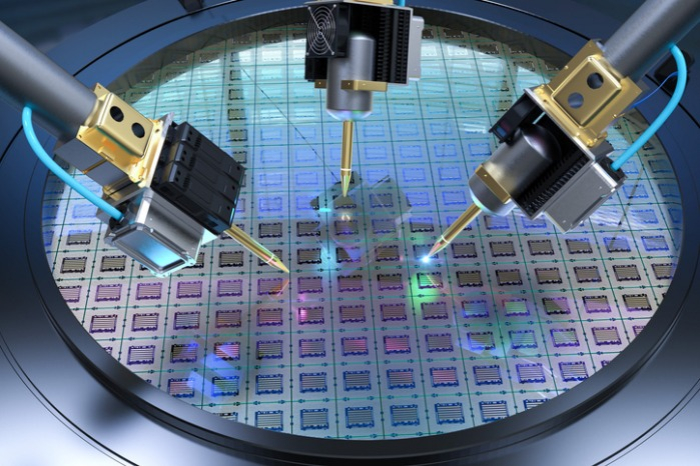
SK Hynix Inc. and Samsung Electronics Co. are confident that a new memory chip market renaissance is just around the corner thanks to the generative artificial intelligence sensation, which is expediting the development of customized, high-performance next-generation chips.
“An AI server requires 500-gigabyte (GB) or larger High Bandwidth Memory (HBM) chips and at least 2-terabyte (TB) DDR5 chips,” Park Myung-soo, the head of DRAM marketing at SK Hynix, said during a semiconductor session of Korean Investment Week (KIW) 2023 that opened on Monday in Seoul.
“The AI rivalry is a strong driver of memory chip demand growth.”
SK Hynix forecast that the AI chip boom will allow the HBM market to grow at a compound annual growth rate of 82% by 2027.
Samsung Electronics echoed its crosstown rival’s view, expecting the HBM market to more than double next year from this year.
“Our customers’ current (HBM) orders have more than doubled from last year,” Hwang Sang-joon, executive vice president of DRAM Product & Technology at Samsung Electronics, said at KIW 2023 on the same day. “Seamless HBM production, packaging and foundry capabilities will determine competitiveness.”
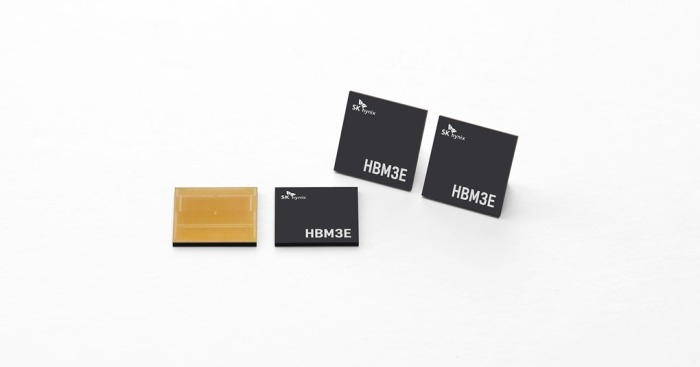
HBM is a high-capacity, high-performance semiconductor, the demand of which is soaring as it is used to power generative AI devices, high-performance data centers, and machine learning platforms.
Its demand is expected to grow further because the chip is used with graphics processing units (GPU) to bolster the capability of generative AI like ChatGPT, an AI chatbot developed by OpenAI and seen as the next big thing that will take over the world.
The two South Korean memory giants, also the world’s top two players, are betting big on HBM chips, which vertically interconnect multiple DRAM chips and dramatically increase data processing speed compared to traditional DRAM products. They are at least five times more expensive.
SK Hynix rolled out the world’s first HBM chips in 2013, and it is leading the pack with a 50% share in the global HBM market as of 2022, according to market tracker TrendForce.
Samsung Electronics is close on its heels with 40%, followed by Micron Technology Inc.’s 10%.
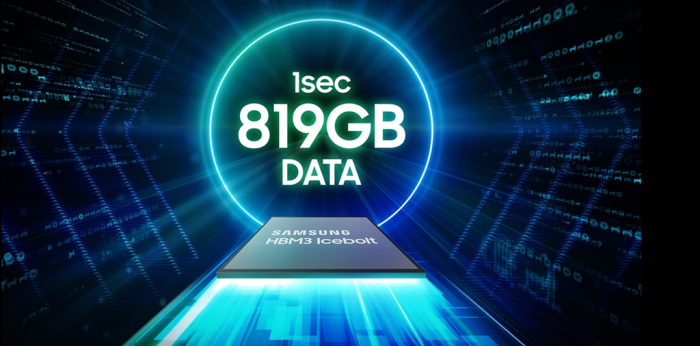
NEXT-GEN, HIGH-PERFORMANCE CHIPS
The AI-driven growth in HBM chip demand has created a new memory market for high value-added, customized DRAM chips, including processing-in-memory (PIM), compute express link (CXL) and double data rate 5 (DDR5), according to industry experts.
“We start discussing a (chip development) roadmap about two to three years in advance,” said Park. “This has increased the lock-in effect.”
To stay ahead of rivals in the new market, SK Hynix and Samsung Electronics will go all out to develop next-generation memory chip products.
SK Hynix on Monday unveiled a plan to introduce HBM4, its 6th-generation HBM, in 2026. It is currently supplying its HBM3 chips to US GPU giant Nvidia Corp., and last month provided samples of HBM3E, the extended version of HBM3, to the US fabless company.
It also plans to collaborate with foundry companies for HBM4 production.
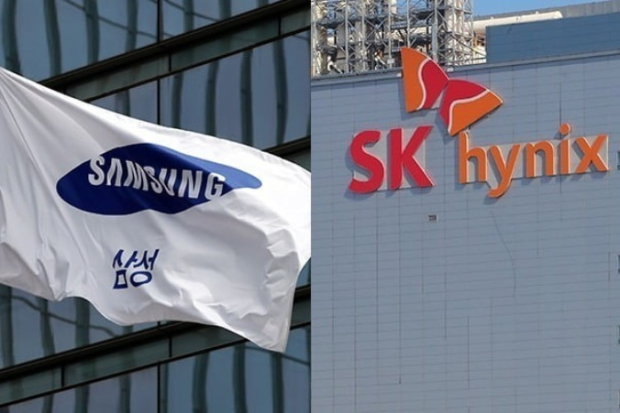
Its bigger rival Samsung Electronics will also focus on the development of high-performance main memory DDR5 and ultra-capacity memory CXL, along with near memory HBM.
“The integration of CPU operation accelerator PIM with the CXL interface will further expand DRAM usage,” said Hwang.
“Our customers ask for high-performance DRAMs, not budget DRAMs,” he said.
CXL DRAM is the next-generation interface that can improve efficient allocation of memory resources, and it can play the role of an external hard driver. PIM is a DRAM that assists in a CPU’s data processing.
Na Seung-joo, managing director of Intel Korea, who also took part in KIW 2023 on Monday, forecast that the release of Intel’s next-generation high-performance CPU, dubbed Granite Rapids, in the second half of next year will spur CXL DRAM demand.
MEMORY UPTURN IN Q4
While the next-generation memory products are expected to open a new DRAM market, the broad memory market is forecast to enter an upcycle later this year partly thanks to the industry’s orchestrated wafer-cut efforts early this year.
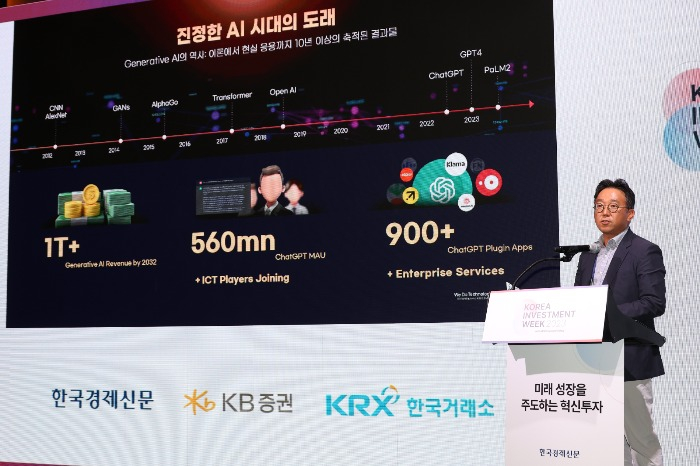
“The memory chip market was supposed to enter a downcycle in 2021 but the supply chain collapse led our clients to amass inventories,” which later caused a delayed but severe downturn in the memory industry with the inventory stockpile last year, said Hwang.
“The (DRAM) demand and supply are expected to be balanced in the third quarter of this year partly thanks to the production cut, and its demand is projected to increase from the fourth quarter.”
The rollout of Intel’s fourth-generation CPU, dubbed Sapphire Rapids, also bodes well for the overall DRAM industry, said Intel Korea’s Na, adding that Intel shipped 1 million units of Sapphire Rapids in mid-August, a boon to DDR5 demand.
Korea Investment Week (KIW) 2023 opened in Seoul on Monday and will run through Sept. 15.
Hosted by The Korea Economic Daily and organized by KB Securities and Korea Exchange, the annual investment forum is a one-stop venue for investors, analysts, entrepreneurs, experts and pundits to share industry insights, learn the latest industrial and investment trends, as well as expand networking among them.
Write to Jeong-Soo Hwang and Ik-Hwan Kim at hjs@hankyung.com
Sookyung Seo edited this article.
More to Read
-
 Korean chipmakersSK Hynix, Samsung's fight for HBM lead set to escalate on AI boom
Korean chipmakersSK Hynix, Samsung's fight for HBM lead set to escalate on AI boomSep 03, 2023 (Gmt+09:00)
4 Min read -
 Korean chipmakersSamsung set to supply HBM3 to Nvidia, develops 32 Gb DDR5 chip
Korean chipmakersSamsung set to supply HBM3 to Nvidia, develops 32 Gb DDR5 chipSep 01, 2023 (Gmt+09:00)
4 Min read -
 Korean chipmakersSK Hynix provides samples of best-performing HBM3E chip to Nvidia
Korean chipmakersSK Hynix provides samples of best-performing HBM3E chip to NvidiaAug 21, 2023 (Gmt+09:00)
3 Min read -
 EarningsSamsung chip turnaround likely in second half after dismal Q2
EarningsSamsung chip turnaround likely in second half after dismal Q2Jul 07, 2023 (Gmt+09:00)
3 Min read -
 Korean chipmakersSK Hynix unveils industry’s slimmest 12-layer, 24 GB HBM3 chip
Korean chipmakersSK Hynix unveils industry’s slimmest 12-layer, 24 GB HBM3 chipApr 20, 2023 (Gmt+09:00)
2 Min read
Comment 0
LOG IN


